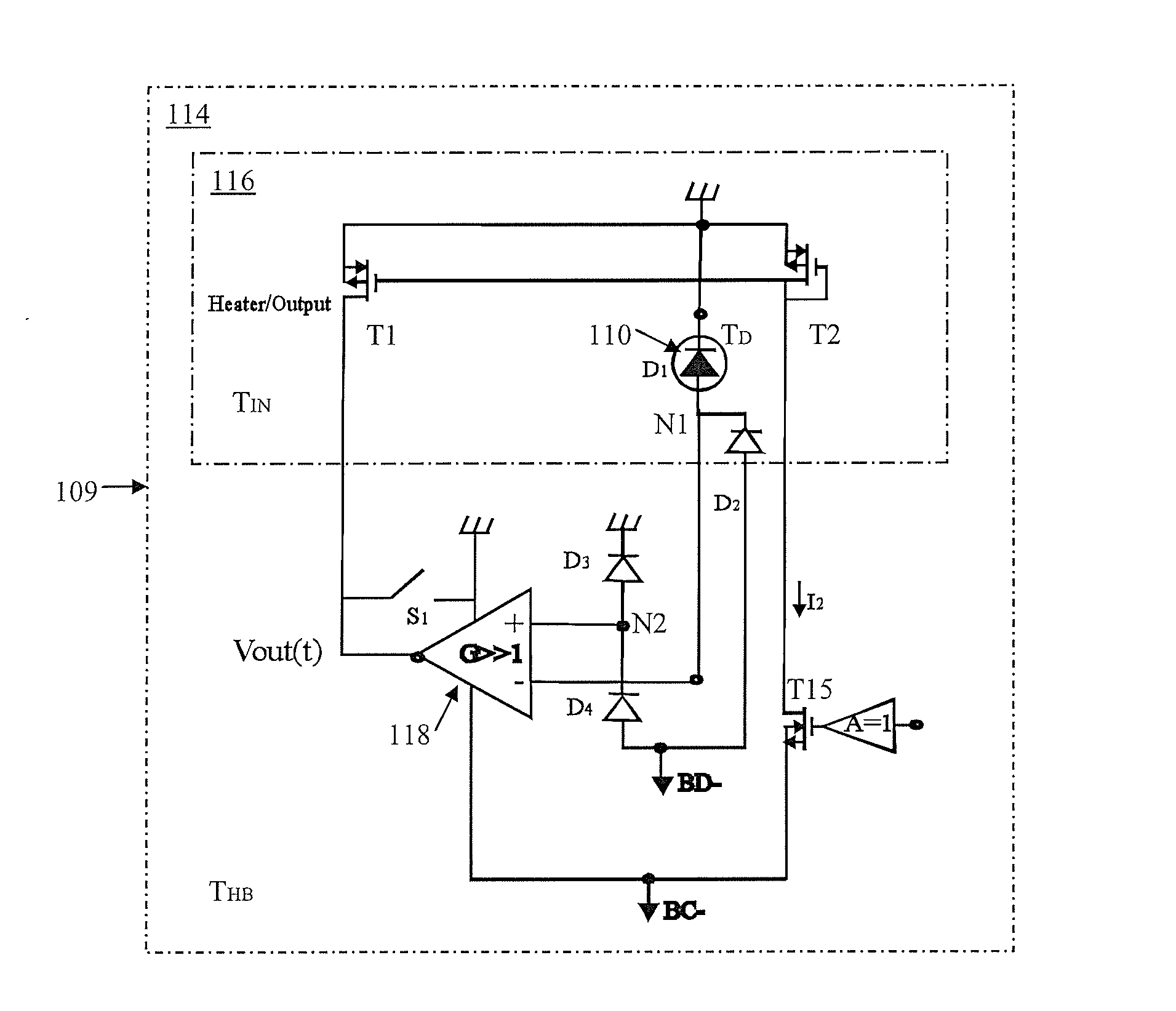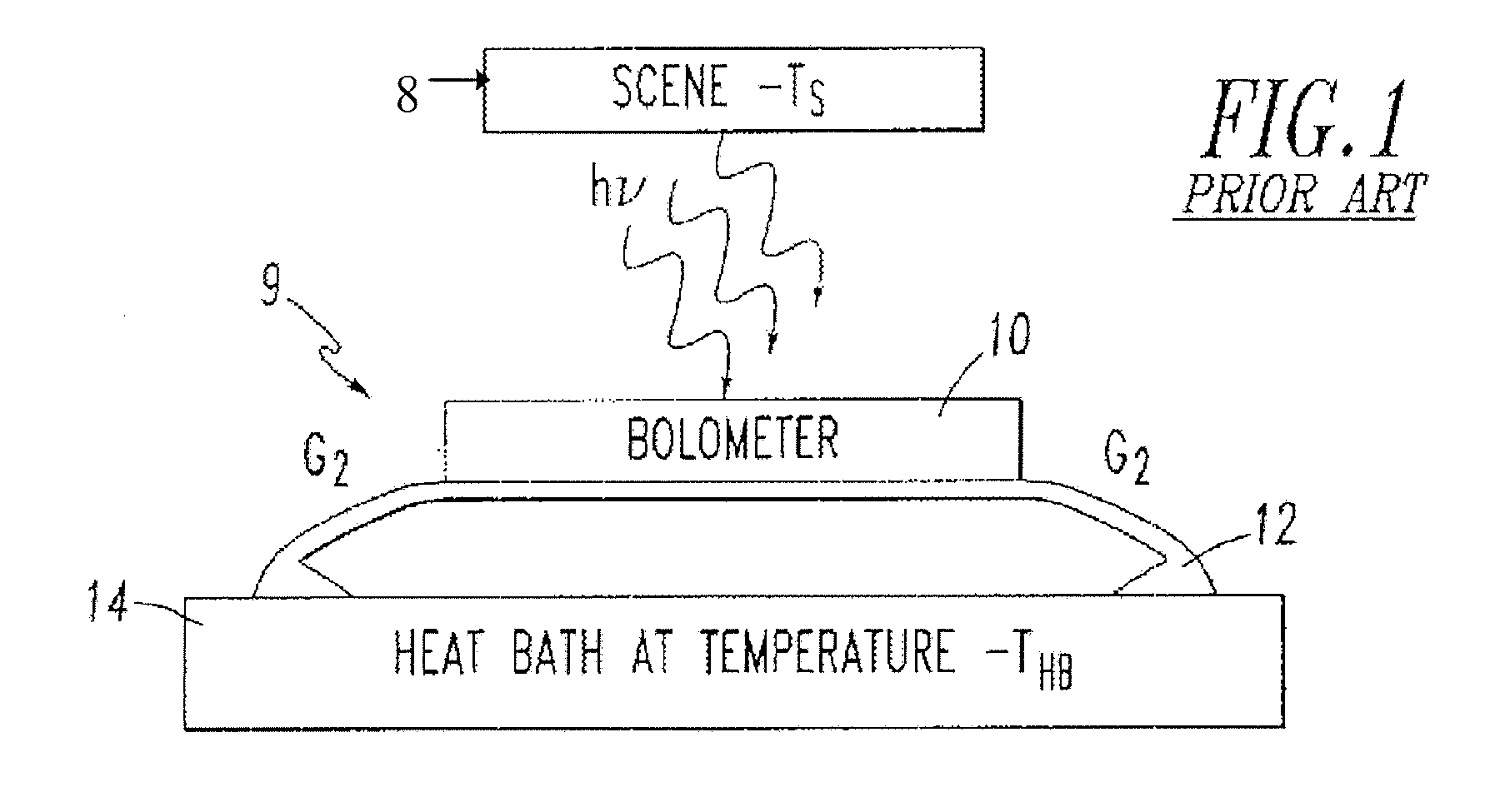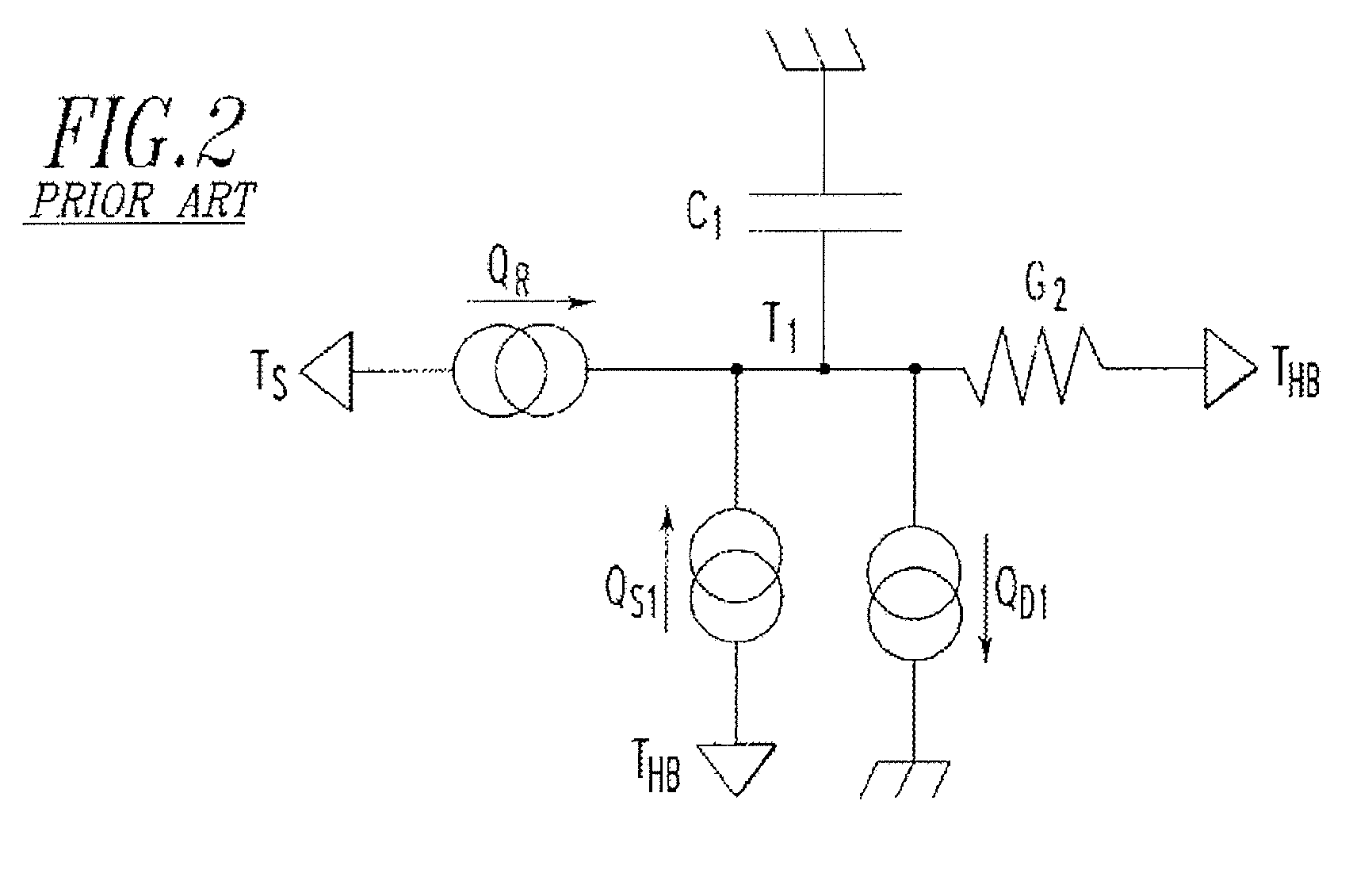Series diode electro-thermal circuit for ultra sensitive silicon sensor
a diode electro-thermal circuit and ultra-sensitive technology, applied in the field of ultra-sensitive silicon sensors, can solve the problems of spectral versatility, lack of spectral versatility of quantum detectors, and poor sensitivity of bolometers
- Summary
- Abstract
- Description
- Claims
- Application Information
AI Technical Summary
Benefits of technology
Problems solved by technology
Method used
Image
Examples
Embodiment Construction
[0092]A diagram of a bolometer pixel 109 with an electro-thermal feedback circuit according to an embodiment of the present invention is shown in FIG. 7. A plurality of such pixels can be arranged in an array, such as in rows and columns, to create nil array of pixels to form a focal plane with bolometer pixels. Each bolometer pixel 109 includes a detector stage 110, an intermediate stage 116, and a heat bath stage 114. Within each pixel, the detector, intermediate and heat bath stages are connected in spaced relation to on another by a low thermal conductance bridge structure, e.g., as described in U.S. Pat. No. 7,361,900 entitled “‘I’ Beam Bridge Interconnection for Ultra-Sensitive Silicon Sensor,” U.S. Pat. No. 7,064,328 entitled “Ultra Sensitive Silicon Sensor Millimeter Wave Passive Imager” or U.S. Pat. No. 6,489,615 entitled “Ultra Sensitive Silicon Sensor,” the disclosures of which are incorporated herein by reference. It will be appreciated that the bolometer pixel can be fa...
PUM
 Login to View More
Login to View More Abstract
Description
Claims
Application Information
 Login to View More
Login to View More - R&D
- Intellectual Property
- Life Sciences
- Materials
- Tech Scout
- Unparalleled Data Quality
- Higher Quality Content
- 60% Fewer Hallucinations
Browse by: Latest US Patents, China's latest patents, Technical Efficacy Thesaurus, Application Domain, Technology Topic, Popular Technical Reports.
© 2025 PatSnap. All rights reserved.Legal|Privacy policy|Modern Slavery Act Transparency Statement|Sitemap|About US| Contact US: help@patsnap.com



